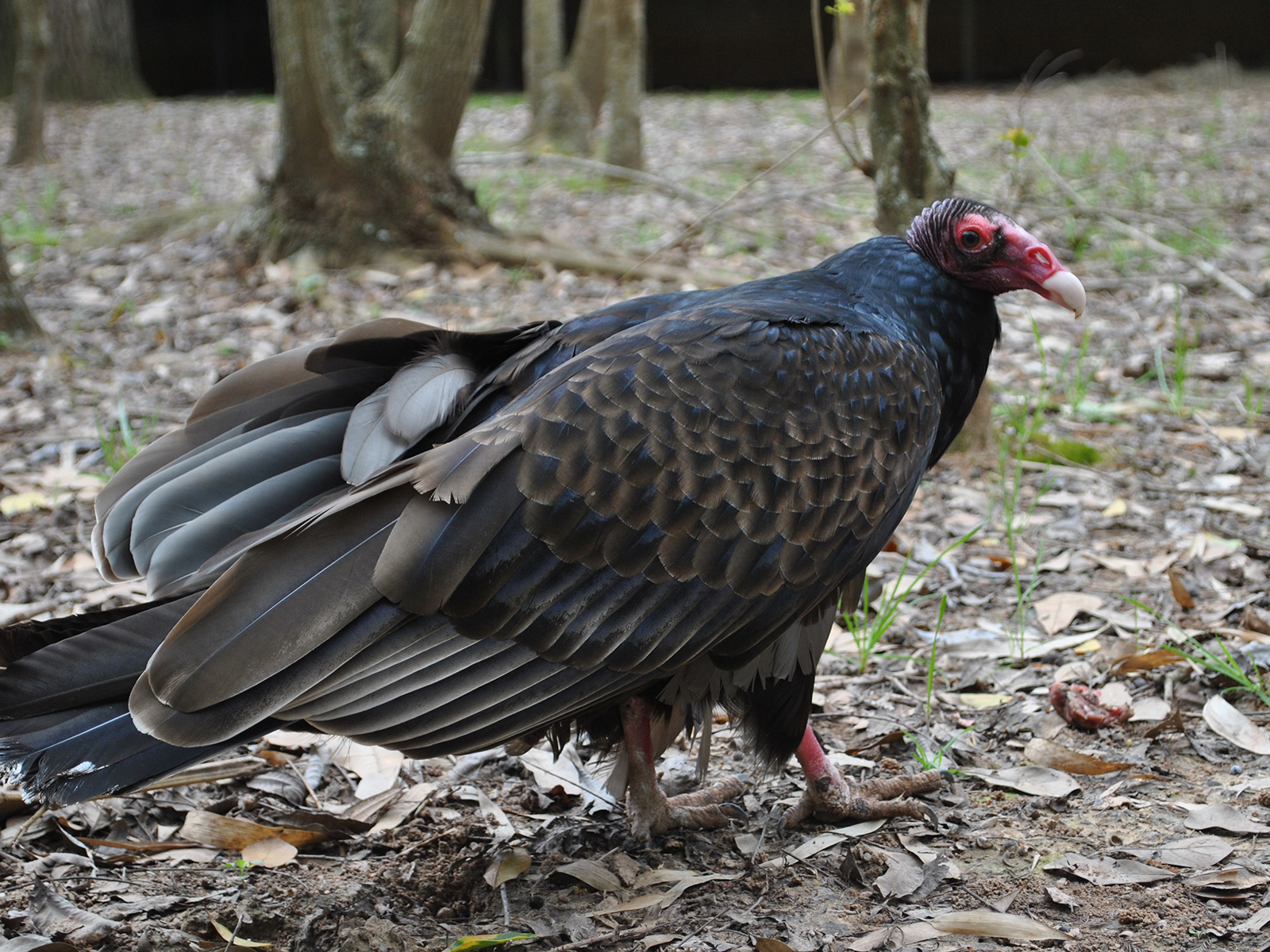Turkey Vulture
Cathartes aura
Class
Aves
Order
Falconiformes
Family
Cathartidae
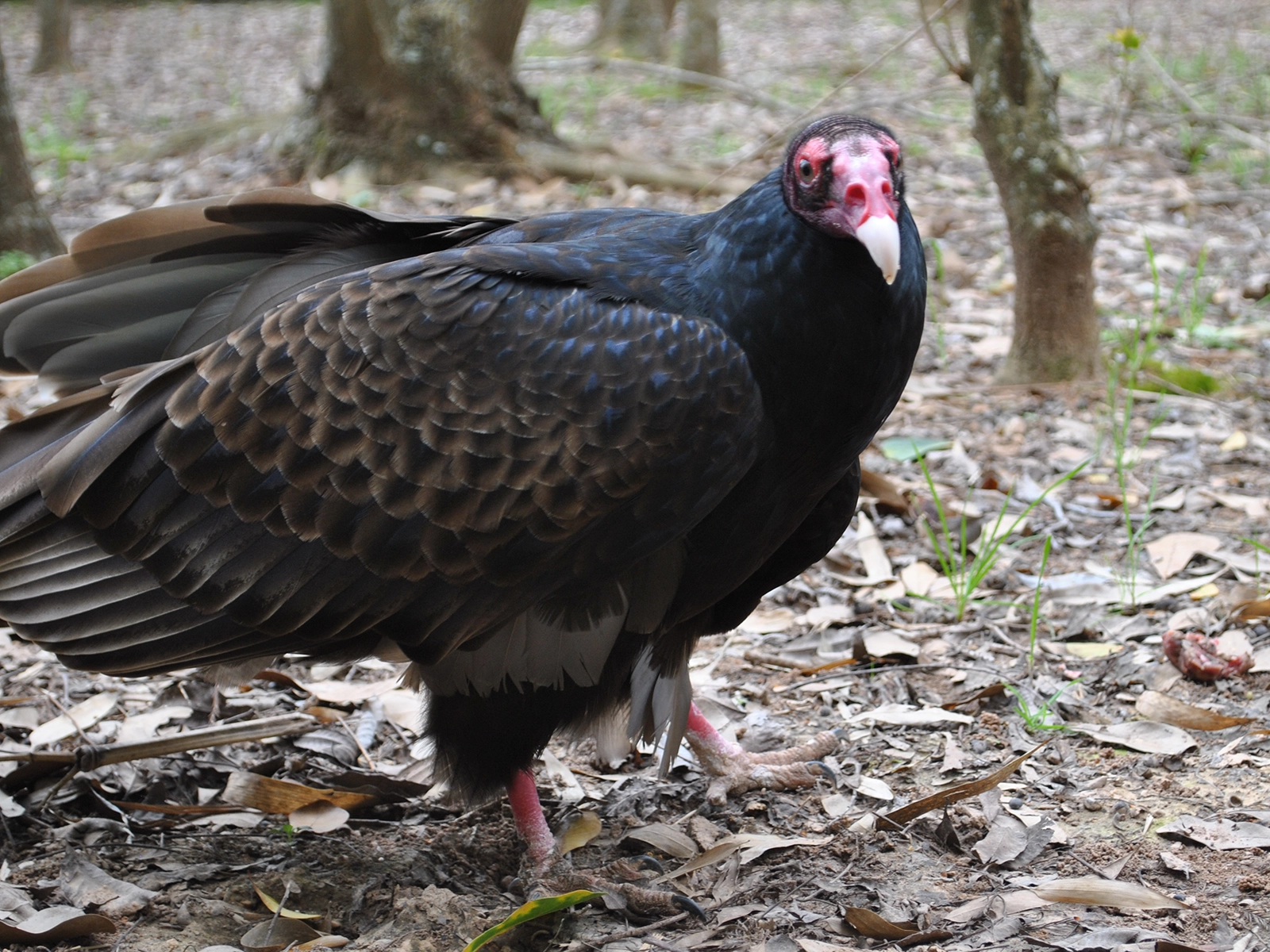
Aves
Falconiformes
Cathartidae
North, Central, and South America
Length: 25 - 30 in
Wingspan: Up to 6 ft
Weight: 2 - 4 lbs
Found in a variety of habitats, from deserts to savannas and grasslands, to tropical and temperate forests
Clutch of 2 eggs
Mainly carrion (dead animals)
Least Concern
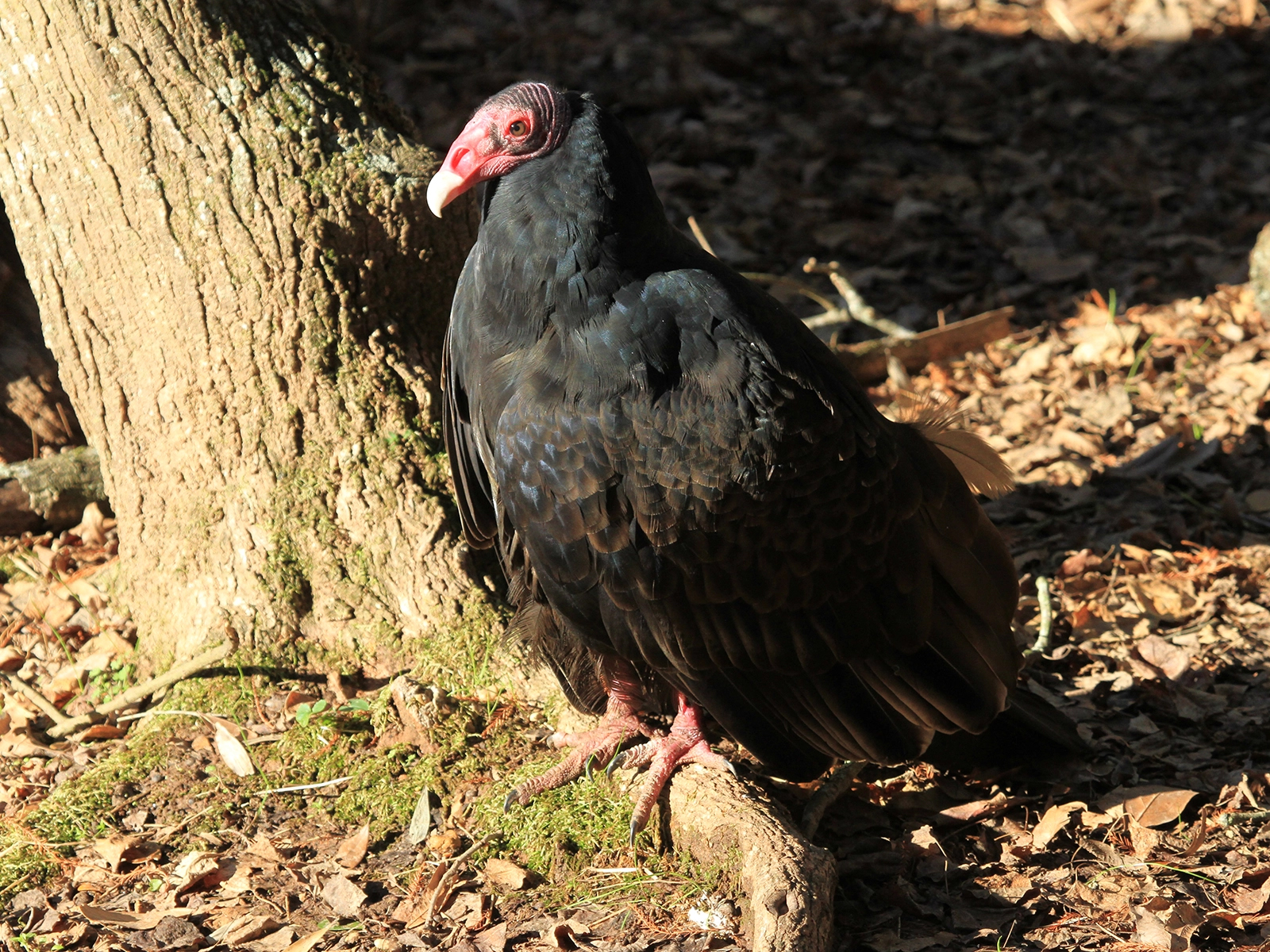
While moving on the ground, a turkey vulture walks or hops clumsily with a sideways hitch.
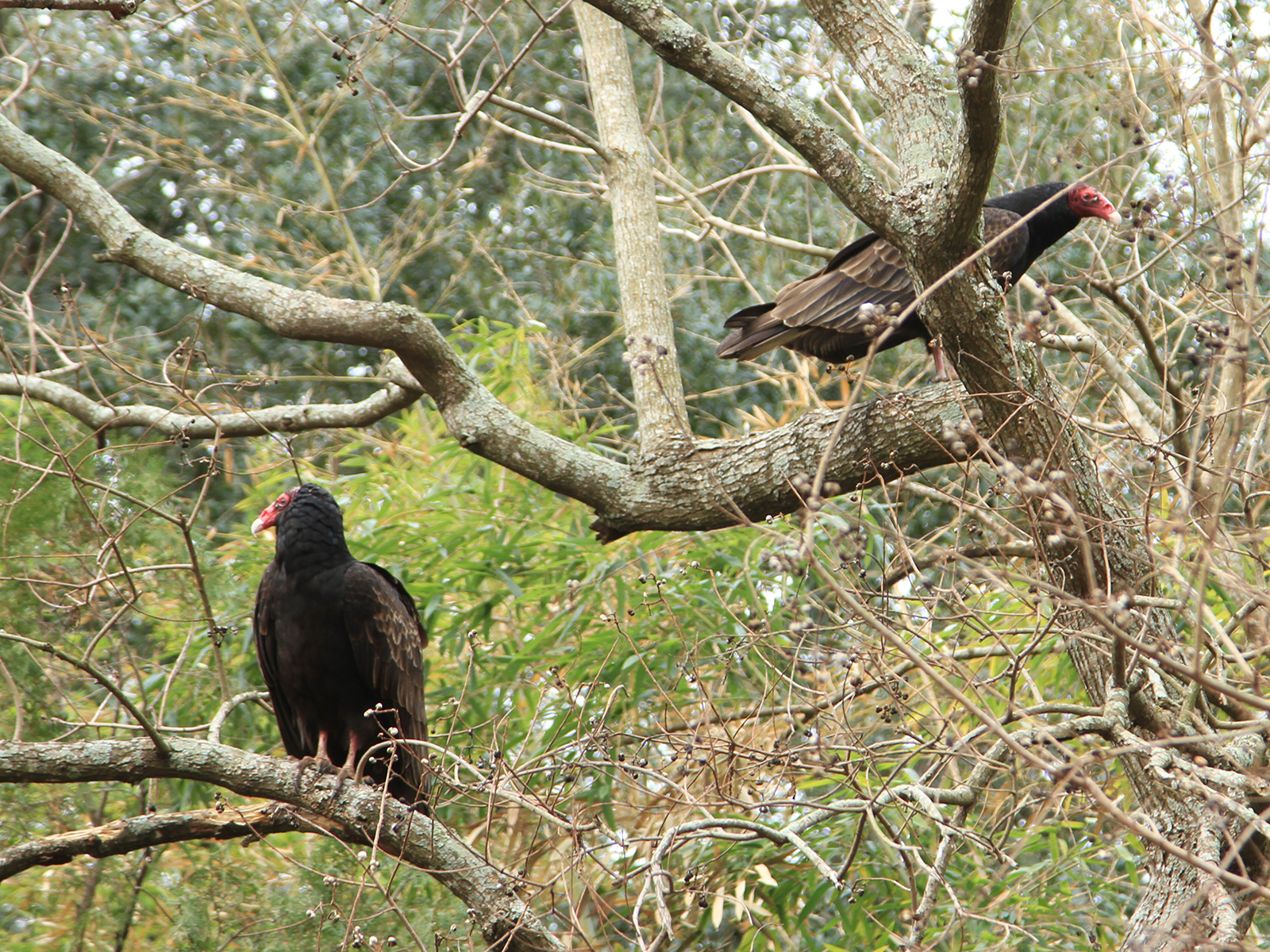
Unlike most birds, the turkey vulture has a very good sense of smell. This helps the bird to seek out hidden food and detect it from long distances away.
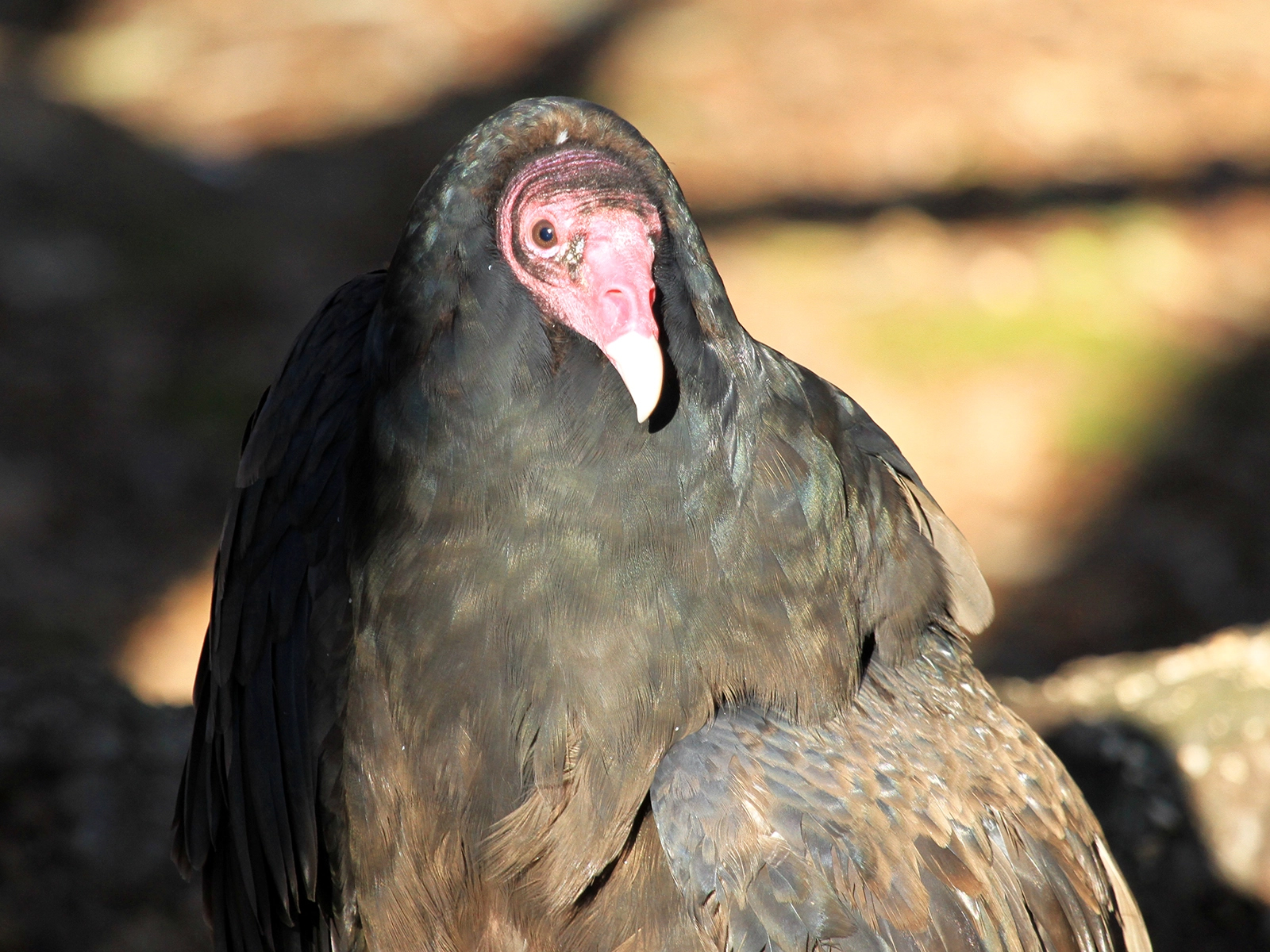
When alarmed by a potential predator, it will often regurgitate its food. This startles the predator and lightens the turkey vulture so it can fly away! Vulture excreta has a high uric acid content that acts as a sanitizer as they defecate on their own legs, killing any bacteria the birds pick up while consuming carrion.
Be Mindful of Roadside Carrion. Vultures often congregate on or near roads to feed on roadkill. If you see vultures feeding, slow down and drive cautiously.
Respect Roosts and Nests. If you find a large vulture roost, observe it from a distance. Vultures do not build elaborate nests; they simply lay eggs in protected spots like rock crevices, hollow logs, or abandoned buildings. If you discover a nesting site, leave the area undisturbed, especially during the breeding season (spring to early summer).
Buzz Hatched June 15, 2000
Frank Hatched January 31, 2022
Ernest Hatched September 4, 2022
